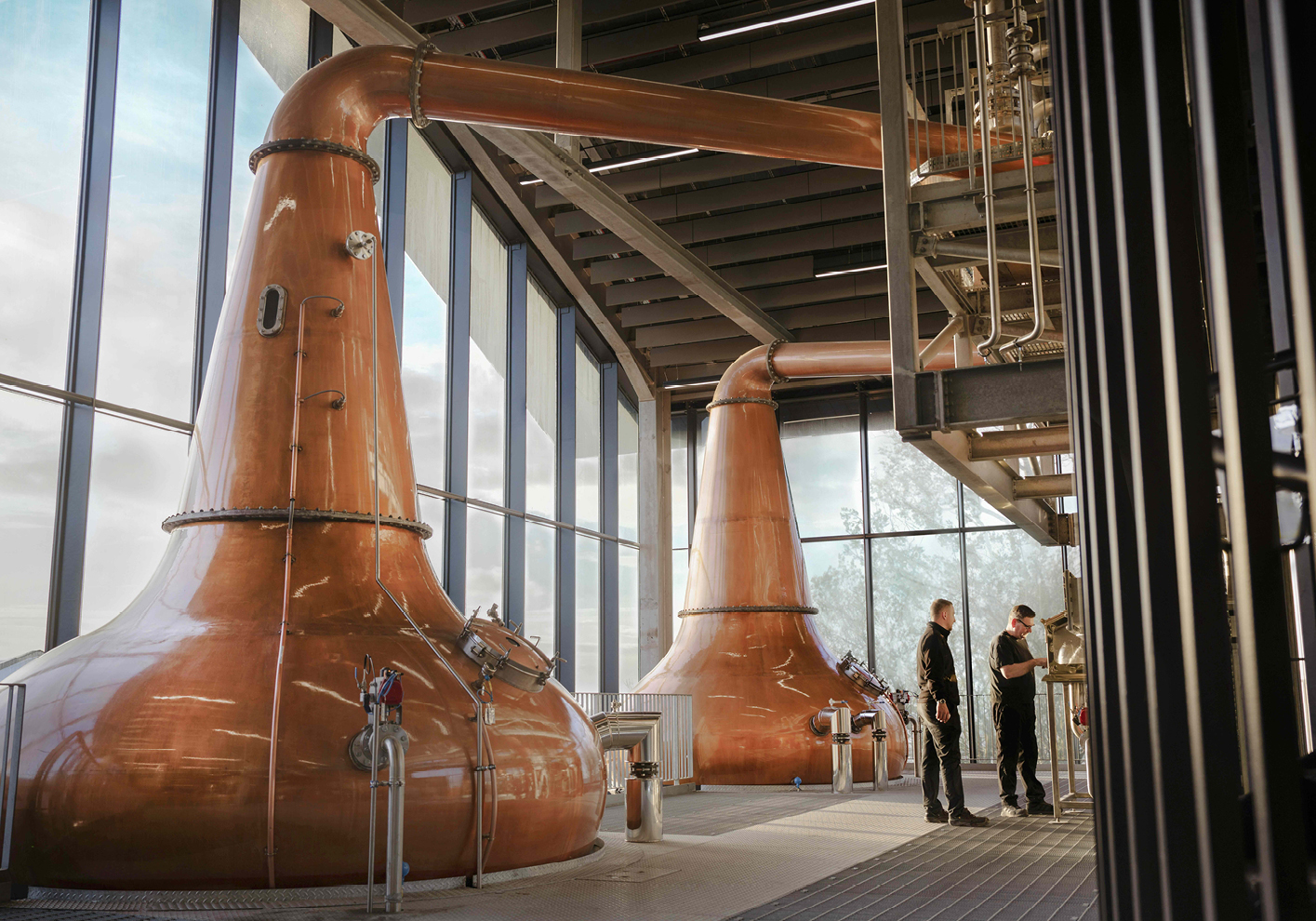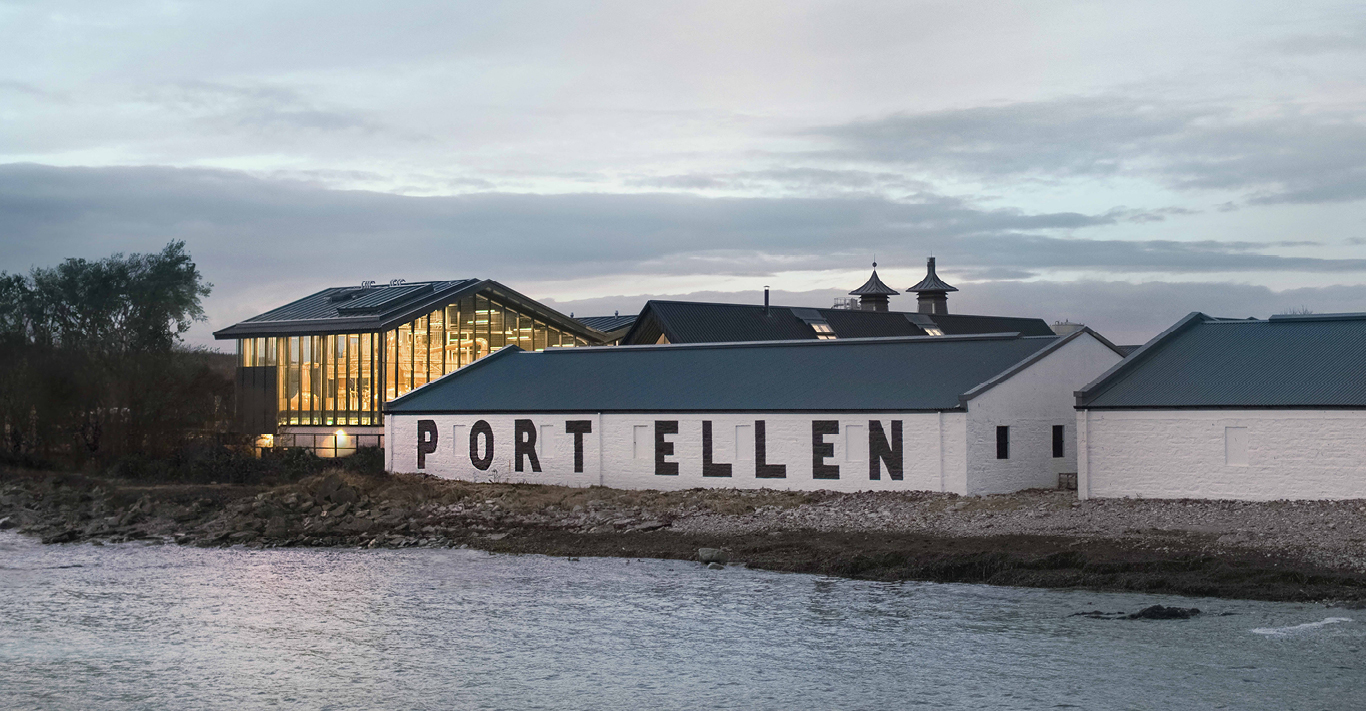WORDS
Chris Madigan
Port Ellen distillery on Islay has been many things over nearly two centuries – an extension to the peat-fired maltings that dominates this part of the Hebridean island; an abandoned site; a workhorse malt whisky producer for blends; and, most recently, a ghost distillery, whose limited remaining stock is revered in a cult-like way by connoisseurs. This month, Port Ellen has reopened and taken on a new identity – Janus-like, it is looking to the past and future at the same time.
Like many distilleries, Port Ellen has opened, closed and reopened several times. The period between 1967 and 1983, however, has resulted in a collection of casks that have aged extremely gracefully. Made legendary by (at first) reasonably accessible Special Releases bottlings, what is left is now extremely rare and all over 40 years old, and therefore priced to narrow demand.
As one of Diageo’s private client destinations, the new Port Ellen has a whole section dedicated to personal visits, with visitors spending time relaxing in the beautiful, spacious Bay Room, with overwhelming views of seabirds, the village and an unusual square lighthouse built by the maltings’ founder as a tribute to his wife. Visitors then move on to the dining room, with its display of every bottling of Port Ellen, to taste the most recent – and at the same time oldest – of its whiskies: the Gemini set.

Gemini is a pair of 44-year-old whiskies (the oldest yet) from 1978. Both spent their lives in European oak butts, but one was diverted to be finished in the distillery’s “remnant” cask – a special vessel which temporarily held excess liquid from every still run for years. It was stored at nearby Lagavulin and retrieved for the purpose of showing how different finishes can affect the whisky. And that creates a bridge from past to future. Because the rest of the day is all about how other variations might affect the Port Ellen whisky of the future.
The tour of the now-working distillery is not your standard ‘this is how we’ve made whisky for over 150 years’ affair. For a start, it is led by the distillery manager himself. As Ali McDonald talks enthusiastically about the shiny new machinery, he points out the efficiency of delivering malted barley down pipes from the maltings just yards away. Then he casually drops a mention of what would need to happen if they made a batch with unpeated barley. Wait, unpeated Port Ellen?
‘Yes,’ says McDonald. ‘We don’t want to just maintain the status quo; we want to be innovative and push different angles. So when people think about Port Ellen, they think about age and time, with long fermentations and very fruited, and that rich heritage is amazing. But, as proud as we are of the history, this is a rebirth – we also want to work on our own thing as well, making sure that we’re pushing innovation. So, the fact that we’ve never done unpeated before is the reason to do it, for us to produce Port Ellen’s first, unpeated malt.’
At this point, we are shown the two full-size “phoenix” stills (malt whisky has to undergo two distillations to create the new-make spirit), based on the blueprints of the stills from the 1967-83 period (the originals are rumoured to be hard at work somewhere in India!). They will continue to produce the classic Port Ellen style. But there is also a pair of one-third scale replicas: experimental stills, in which the team can try variations of every factor that will affect flavour – the mash of barley (or not even barley, perhaps, as they hint at producing spirits that aren’t whisky), the fermentation time, length and temperature of distillation etc. ‘The reason they are the same shape as the main stills is that we know then, if an experimental run works out really well, we can scale it up.’
However, they do also have the option of changing the shape of the still. McDonald points out the flanges on these stills – riveted seams between sections which can be easily unfastened, to install a different sized neck or a lyne arm (where condensation begins) at a different angle. Again, these will affect the spirit character.

The culmination of the experimental side of the distillery is the spirit safe. Generally, the way this works is a binary choice between good and bad alcohols (ethanol is only one compound in a distillate). Alcohol coming from the still in the first (roughly) quarter of a run – known as foreshots and heads, containing acetone, methanol, and aldehydes – is diverted to be redistilled. When the good liquid – the hearts, around half the run – starts coming through, a pipe in the spirit safe is simply moved to flow into the collection tank. Towards the end, the pipe is moved back to cut the feints or tails containing fusel oils.

The new spirit safe at Port Ellen, the first of its kind, is able to create 10 cut points – and McDonald has collected samples from the first time it was used to demonstrate what happens. On the tour, you get to nose these and discover that over three hours, the still is producing a spirit with orchard fruit notes, then tropical flowers, through to grassiness and only towards the end, changing levels of smoke and iodine from the peat. The possibilities this gives Diageo master blender Aimée Morrison are mind-boggling. And the fact that the two people most essential to Port Ellen now were not even born when the old distillery closed in 1983 suggests that the ghost will soon be allowed to rest, and eyes will be firmly facing the future.
There are 274 sets of twin bottles of Port Ellen Gemini at £45,000. Collectors planning to acquire one can expect an invitation to spend a day at the distillery, by contacting the Diageo private client team, diageorareandexceptional.com. It is also possible to book this “Atlas of Smoke” experience via the distillery (price on application). A 90-minute tour of the distillery, maltings and warehouses, including sampling old Port Ellen stock you can draw from the cask yourself, costs £200; portellen.com.




